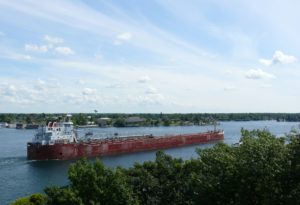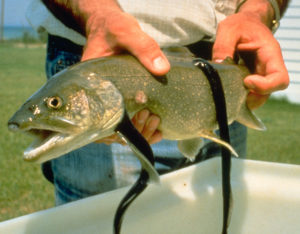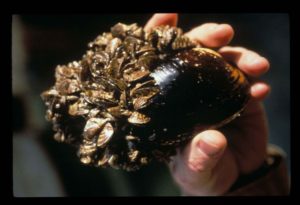One of the world’s great watersheds begins in the tributaries to Lake Superior, flows through the other four Great Lakes (Michigan, Huron, Erie and Ontario) and then follows the St. Lawrence River into the northern Atlantic Ocean. The lakes and rivers form the U.S.-Canada border from Michigan to New York. And for hundreds of years, humans have been modifying the watercourse to allow easier navigation. That effort took a major leap forward on May 13, 1954, when both Canada and the U.S. signed laws to create the St. Lawrence Seaway.

The watercourse runs for 2340 miles from Lake Superior to the mouth of the St. Lawrence River. Although long stretches are readily navigable, obstacles to transportation exist at several places, with shallow depths, rapids and waterfalls—including the famous Niagara Falls between Lake Erie and Lake Ontario. As early as 1680, engineers began working on canals and locks to bypass those obstacles.
The most significant of the early efforts was the construction of the Welland Canal, which bypasses Niagara Falls. Canada completed the Welland Canal in 1833, with 40 wooden locks over its 27-mile length, which made the four upper Great Lakes accessible from the sea. But much work remained, and the two nations started planning for a full deep-water system in 1895.
That plan arrived on May 13, 1954, when both countries passed parallel laws creating the authority to proceed. Over the next five years, the two countries spent $470 million to complete the system (Canada paid 70%). The system included 15 locks (13 in Canada, 2 in the U.S.) and deepening of the channel so that ships up to 740 feet long, 78 feet wide and drawing 26.5 feet of water could make the entire journey from ocean to Lake Superior.
The seaway has been a major boon for the industries of the upper Midwest. The seaway is open for much of the year, setting a record for ice-free operation in 2017 of 298 days. In 2017, 4,119 ships passed through the system, carrying 38 million tons of materials. Major cargoes are iron ore, coal, limestone, grain and other construction and industrial raw materials.
Unfortunately from an ecological perspective, the seaway also transports unintended cargo—non-native and invasive species. In earlier years, ships would empty the ballast water they carried when they arrived at a port—along with the water came many living species that could survive in the holds on the journey (today, ballast water needs to be exchanged before a ship enters freshwater). The obstacles to boat traffic were also obstacles to the movement of species; their removal has allowed species to migrate upstream. Organisms also attach to the hulls of ships or get caught on propellers and other external parts of ships.
For all these reasons, the Great Lakes above Lake Ontario have become home to more than 180 species that are not native. Most are of minor or localized concern, but several have become very abundant (that is, invasive) and cause significant damage to the ecosystem.
Among the worst is the sea lamprey, a parasitic fish that worked its way up the system when canals and locks allowed them to bypass obstacles. Sea lampreys attach to the sides of fish, drilling holes in the flesh and draining fluids from their host. Invasions of sea lampreys totally changed the fish assemblage of the Great Lakes, reducing the native lake trout to near extinction. In response, fisheries agencies introduced Pacific salmon and spends millions every year to control sea lampreys.

A second disastrous species is the zebra mussel, which invaded through ballast water. The zebra mussel is a European species that developed massive populations in the Great Lakes. The large populations filter lake water at a large scale, consuming the micro-organisms that fed the rest of the native food-chain. They also create large encrustations on water intake and discharge pipes, reducing the effectiveness of water supply and electric power generating plants.

Other species of concern are non-native plants, such as purple loosestrife and Eurasian watermilfoil, and other fish, such as Asian carp species (silver and bighead carp). Despite efforts to combat the entry of non-native species, the very nature of the system—opening the waterway and allowing a continuous stream of boat traffic—means the invasion will continue. A 2012 study estimated that the total of these aquatic invasive species caused damages, lost income and containment costs of about $100 million per year—that cost will never go away.
References:
NOAA. Great Lakes Region—Invasive Species. Available at: http://www.regions.noaa.gov/great-lakes/index.php/great_lakes-restoration-initiative/invasive-species/. Accessed May 10, 2018.
Rosaen, Alex L. and others. 2012. The Costs of Aquatic Invasive Species to Great Lakes States. Anderson Economic Group. Available at: https://www.nature.org/ourinitiatives/regions/northamerica/areas/greatlakes/ais-economic-report.pdf. Accessed May 10, 2018.
Saint Lawrence Seaway Development Corporation. 2018. The Great Lakes-St. Lawrence Seaway System. Available at: https://www.seaway.dot.gov/about/great-lakes-st-lawrence-seaway-system. Accessed May 10, 2108.
The St. Lawrence Seaway Management Corporation. Seaway History. Available at: http://www.greatlakes-seaway.com/en/seaway/history/. Accessed May 10, 2018.
